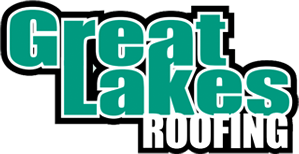When To Get a Commercial Roof Inspection
Routine commercial roof inspections and maintenance ensure your roof lasts. Roofing experts recommend visually inspecting your commercial building’s roof a few times a year, especially after severe weather, such as high winds, heavy rainfall, or extreme snowfall.
A quick visual inspection can reveal surface-level problems, such as pooled water, debris, and branches. But not all issues are easy to identify. That is why you need to call in roofing professionals.
Several factors determine how often you need roofing professionals to inspect your commercial roof. These include your roof’s age, materials, and drainage. You also need to consider the weather conditions and how resilient your roof is against them. Let’s take a closer look.
Your Commercial Roof’s Material Composition
The deterioration rate of roofing materials varies considerably. For example, modified bitumen roofing, thermoset (EPDM) roof membranes and thermoplastic (PVC & TPO) roof membranes have a lifespan of up to 30 years. Roofing experts recommend commercial roof inspection at least once a year.
Built-up roofing (BUR) membrane lasts 20–25 years and should be inspected at least twice every year or more often in case of severe weather. Metal roofing lasts longer (40–60 years) but should be inspected seasonally because metal is susceptible to rust. Lastly, Green roofing requires three or four inspections annually despite its indefinite lifespan.
Your Commercial Roof’s Age
Any roof older than ten years needs seasonal inspections. Newer roofs require less frequent inspections. For example, experts recommend inspecting ceramic tile and metal roofs every 3–5 years. They recommend commercial roof inspection every 1–3 years for composite, asphalt, and modified bitumen roofs.
Remember, these are general guidelines. You need to call roofing professionals to inspect your commercial building’s roof to assess the condition and age of your roof and recommend a suitable inspection schedule.
The Weather Conditions Affecting Your Commercial Roof
Snow is beautiful but can wreak havoc on commercial roofs. Branches, leaves, dirt, and debris can also settle on the roof due to high winds. As more stuff accumulates on your roof, it comes under increasing weight and pressure, which may lead to damage.
Regular commercial roof inspections are therefore necessary, even in mild weather, because even light snow or rain can degrade your roof over a long time. Temperature fluctuations during different seasons affect your roof in the following ways.
- Winter. Besides weighing down on your roof, accumulated ice can block your roof’s drainage. Frequent temperature fluctuations can deteriorate the roofing material by causing thermal splits or cracks.
- Spring. Water from heavy spring rain can leak into cracks formed in the winter. That’s why roofing experts recommend commercial roof inspections after winter.
- Summer. Scorching temperatures may lead to cracks in roof sealants. High humidity levels may cause some roofing materials to come loose due to swelling. Summer inspections can identify and address these issues early.
- Fall. Fall comes with high winds and falling leaves. Accumulation of fallen leaves and debris can block your roof’s drainage, potentially causing leaks and pooling water. High winds may also drop branches on your roof and damage the membrane.
Schedule a Commercial Roof Inspection
Scheduling regular inspections help keep your commercial roof in top condition throughout its lifespan. In some cases, regular inspection, cleaning, and maintenance help safeguard your roofing warranty. Contact Great Lakes Roofing today for top-tier commercial roof inspection services.
CONTACT US
Subscribe to our Newsletter!
Emails you can trust
[instagram-feed]
